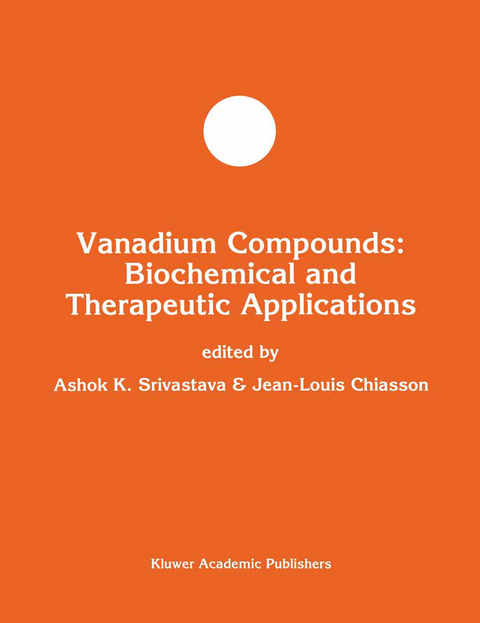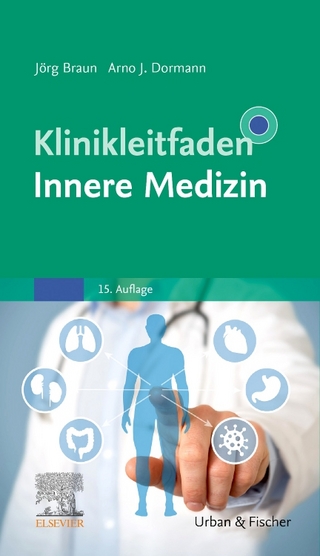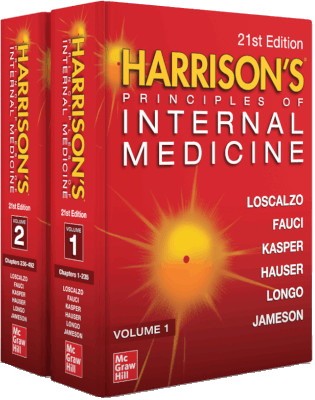
Vanadium Compounds: Biochemical and Therapeutic Applications
Springer (Verlag)
978-0-7923-3762-1 (ISBN)
In vitro and animal studies show that vanadate and other Because most cellular components contain hydroxyl and/or vanadium compounds increase glucose transport activity and phosphate groups, vanadate reacts as shown in eq. 1, and 2 normalize glucose metabolism [1-5]. Furthermore, these with a variety of metabolites. For example, the reaction of insulin-mimetic compounds can be administered orally. Vana- vanadate with the 2'-hydroxyl group of the cofactor NAD date enhances the phosphoprotein formation which is attrib- generates an NADP analog, NADV (path b) [22]. NADV is uted to either the activation of protein kinases or inhibition an excellent cofactor for enzymes such as glucose-6-phos- of protein phosphatases. Despite the interest in document- phate dehydrogenase, 6-phosphogluconate dehydrogenase, ing the effects of vanadate on protein kinases, most reports and alcohol dehydrogenase [22]. The presence ofNADV have used indirect methods and studies with purified kinases could affect the levels of reducing equivalents in the cell, im- show weak, if any, interaction of vanadate with kinases as portant in maintaining a normal glucose metabolism.
This a group of enzymes (reviewed in Refs. [6-8]). Vanadate type of mechanism is distinct from the vanadate-induced interacts potently with phosphatases and the inhibition is NADH oxidation by plasma membranes [23]. Organic attributed to a five-coordinate vanadate complex which vanadates have been shown to substitute for organic phos- mimics the transition state of the phosphate ester hydroly- phates in many of the enzymes related to glucose metabolism sis reaction (reviewed in Refs. [7,9]).
I: Chemistry.- The chemistry of peroxovanadium compounds relevant to insulin mimesis.- Vanadium chemistry and biochemistry of relevance for use of vanadium compounds as antidiabetic agents.- Peroxo heteroligand vanadates(V): Synthesis, spectra-structure relationships, and stability toward decomposition.- Chemically and photochemically initiated DNA cleavage by an insulin-mimetic bisperoxovanadium complex.- II: Biochemical and physiological studies.- Insulin-like actions of vanadate are mediated in an insulin-receptor-independent manner via non-receptor protein tyrosine kinases and protein phosphotyrosine phosphatases.- Peroxovanadium compounds: Biological actions and mechanism of insulin-mimesis.- Unique and selective mitogenic effects of vanadate on SV40-transformed cells.- Vanadium salts stimulate mitogen-activated protein (MAP) kinases and ribosomal S6 kinases.- Protective effect of vanadate on oxyradical-induced changes in isolated perfused heart.- In vivo effects of vanadate on hepatic glycogen metabolizing and lipogenic enzymes in insulin-dependent and insulin-resistant diabetic animals.- The relationship between insulin and vanadium metabolism in insulin target tissues.- Modulation of insulin action by vanadate: Evidence of a role for phosphotyrosine phosphatase activity to alter cellular signaling.- Reversal of defective G-proteins and adenylyl cyclase/cAMP signal transduction in diabetic rats by vanadyl sulphate therapy.- Effects of vanadate on the expression of genes involved in fuel homeostasis in animal models of Type I and Type II diabetes.- Decrease in protein tyrosine phosphatase activities in vanadate-treated obese Zucker (fa/fa) rat liver.- Evidence for selective effects of vanadium on adipose cell metabolism involving actions on cAMP-dependent proteinkinase.- The enhancement by pervanadate of tyrosine phosphorylation on prostatic proteins occurs through the inhibition of membrane-associated tyrosine phosphatases.- Contractile effects of vanadate on aorta rings from virgin and pregnant rats.- In vivo modulation of N-myristoyltransferase activity by orthovanadate.- Regulation and control of glucose overutilization in erythrocytes by vanadate.- In vitro and in vivo antineoplastic effects of ortrovanadate.- Membrane — vanadium interaction: A toxicokinetic evaluation.- III: Potential use in therapy and toxicological studies.- Increased potency of vanadium using organic ligands.- In vivo effects of peroxovanadium compounds in BB rats.- Long-term antidiabetic activity of vanadyl after treatment withdrawal: Restoration of insulin secretion?.- Long-term correction of STZ-diabetic rats after short-term i.p. VOSO4 treatment: Persistence of insulin secreting capacities assessed by isolated pancreas studies.- Antihypertensive effects of vanadium compounds in hyperinsulinemic, hypertensive rats.- Vanadate induces normolipidemia and a reduction in the levels of hepatic iipogenic enzymes in obese Zucker rat.- In vivo and in vitro studies of vanadate in human and rodent diabetes mellitus.- Toxicology of vanadium compounds in diabetic rats: The action of chelating agents on vanadium accumulation.- Index to Volume 153.
| Erscheint lt. Verlag | 30.4.1996 |
|---|---|
| Reihe/Serie | Developments in Molecular and Cellular Biochemistry ; 16 |
| Zusatzinfo | 5 Illustrations, black and white; VI, 246 p. 5 illus. |
| Verlagsort | Dordrecht |
| Sprache | englisch |
| Maße | 216 x 280 mm |
| Themenwelt | Medizinische Fachgebiete ► Innere Medizin ► Diabetologie |
| Medizinische Fachgebiete ► Innere Medizin ► Endokrinologie | |
| Medizin / Pharmazie ► Pharmazie | |
| Naturwissenschaften ► Biologie ► Biochemie | |
| ISBN-10 | 0-7923-3762-X / 079233762X |
| ISBN-13 | 978-0-7923-3762-1 / 9780792337621 |
| Zustand | Neuware |
| Haben Sie eine Frage zum Produkt? |
aus dem Bereich


